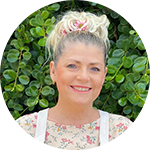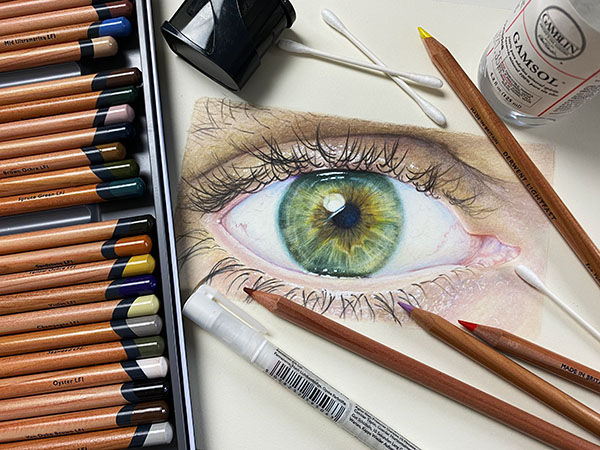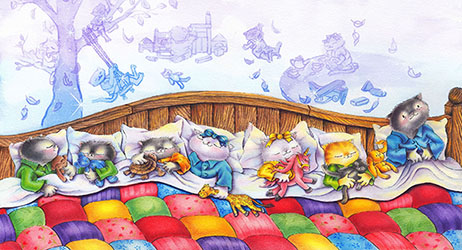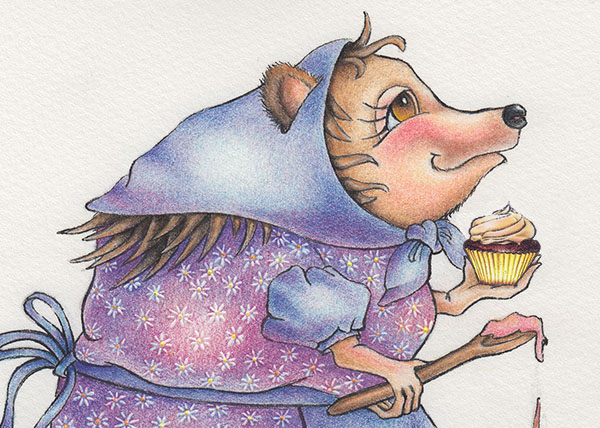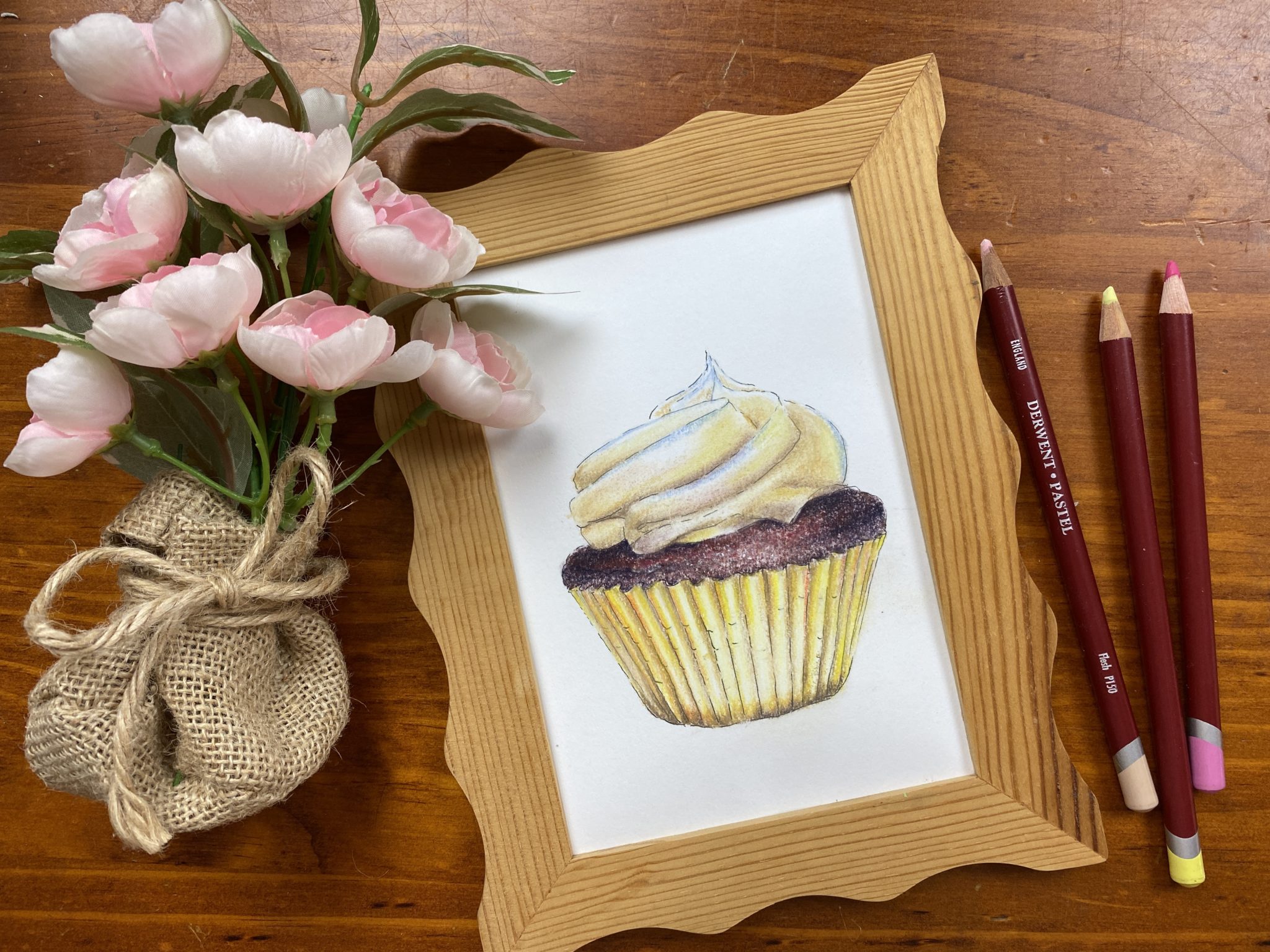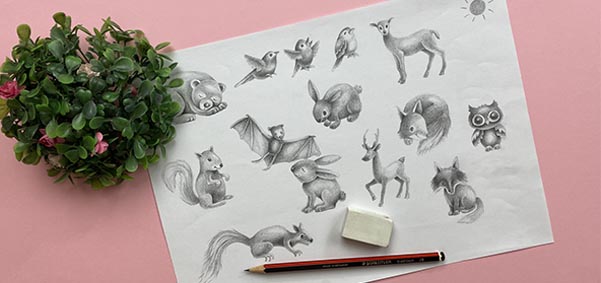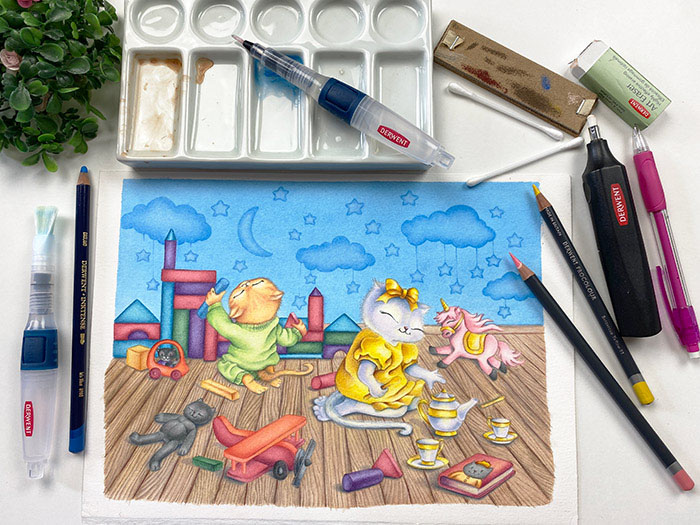Have you ever felt like you are wearing a blindfold when you begin to draw, as though something is blocking your vision. You try to draw but what you see in your mind doesn’t come out of your hand and onto your paper. It feels like there’s a miscommunication going on somewhere between your eyes and your hand.
If so, maybe its time to take off the blind fold and discover your artist’s eye. You might have heard about the artist’s eye and you have probably stumbled upon it accidentally at some stage during your drawing experiences, but maybe its a bit of an elusive mystery to you. Unless we really know how to access our artist’s eye on demand our drawing and painting experiences can be pickled with sporadic success.
So how do we remove the blindfold to access our artist’s eye immediately? The answer is all in the mind. We need to talk to our mind to access our artists eye and the blindfold will just naturally lift off. Suddenly we begin to see our world differently and as a result we can draw better immediately.
When I say ‘talk’ to our mind I don’t mean by going insane, quite the opposite. The type of talking we do to take off the blind fold involves having a conversation with ourselves. Its a matter of becoming very aware of what our mind is saying to us while we draw. Rather than allowing random words to wander around in our mind while we draw, we take control of those words that are being spoken to ourselves. We control the thoughts in our mind while we are drawing through speaking aloud to ourselves. This process is extremely powerful and the secret to the rapid success our students achieve as a result of studying the ‘Complete Drawing and Painting Certificate Course’ on Drawpj.com
I call this conversation talking in the ‘Artist’s Language.’ It’s a language that thinks differently to our normal everyday way of thinking. It takes a little bit of practice to do at first but once you grasp the idea of this you will always be able to remove the blind fold and access your artist’s eye immediately.
The Artist’s Language is a descriptive, questioning and comparative way of thinking. It asks many questions and is curious about nature, objects and things in the world around it. The kinds of questions and statements you make when using the Artist’s Language should be all relevant to the drawing or subject you are creating.
Here are some examples of typical questions and comments you might ask yourself while you are drawing or painting and using the artist’s language;
- What angle is this compared to the side of my page? (when drawing from a reference source first compare the angle on the reference source then use that information to draw your image.)
- Is this line parallel to the side of my page, or on a slight angle? How much of an angle?
- What direction is this line angled towards? Its travelling towards the kitchen sink, oh and this smaller line is angled towards the window in front of the sink. (Use the furnishings and structure of your home or immediate drawing environment as sign posts. This works much better than saying to my left or right because we often have to stop to work out what left or right is, its easier to just talk to yourself about things around you.)
- How long is this line compared to the other one alongside it or to a half-way mark along the side of this square?
- Wow, look how the light shines off the surface of this object and it looks like a pear-shape or even a bit like a jelly-bean.
- Hmmm, it is so wide at the top compared to the bit at the bottom. I wonder how wide that is, oh I see it is twice as wide and a little more.
- Oh, that handle has the most gorgeous curve…I love the way it winds down and around. It leaves a space in between that forms a half of a love-heart.
At first it might feel weird talking to yourself out loud, but its so important to verbalise these questions and statements. The reason for this is that speaking aloud gives the logical, reasoning side of our brain an activity to do. The logical part of our brain is not able to multi-task and whilte it is busily asking questions and making statements about the object we are drawing, it can’t say negative things to us.
The blindfold feeling that we experience when trying to draw is a direct result of our logic brain saying negative and distracting things to us such as, “you can’t draw, don’t even bother. Just give up, you are silly to think you can. Leave it to the experts, don’t you think there are enough others out there who can already draw. Why are you bothering. You know your teacher told you in primary school you can’t draw and your brother/sister laughted at your attempt at drawing horses so why do you think you can now.”
Yes our logic brain says anything it can to stop us from drawing because it resists change of any kind. By giving the logic brain a task to do (talking in the aritst’s language) we are immediately able to shut up these negative voices that create the blindfold feeling and at the same time access the all-important creative side of our brain. To successfully draw we need a unique synergy between the logic and the creative halves of the brain.
Using the artist’s language is most necessary for us to be able to remove the blindfold and access our artist’s eye immediately. It can help us successfully draw and paint realistically from either pictures, photographs or real life objects like never before!
The exciting thing is that once you have drawn an object by really looking at it in this way (using the artists language,) you get to deeply know the object and can then use self-expression to interpret the image with your own emotions or feelings. You can begin to develop a visual memory and draw feely from imagination. You might choose to abstract the shapes, colours and forms to fully express yourself. That is when the real fun begins!

